Italian cuisine is among the most well-known and popular throughout the world, inspiring dishes and foods from America to Australia. The history of Italian cuisine is as rich and flavoursome as the food itself, and the country has long-standing traditions relating to its proud dishes.
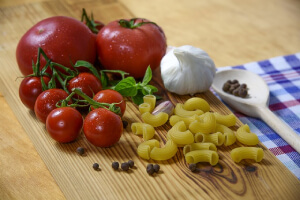
Italian food heritage is really a culmination of Italian history and agriculture. Italy's geographical position has always been a vantage point for traders, from the ancient Roman times to the Renaissance and up to the present day. As such, exotic herbs, ingredients and foods travelled through Italy for centuries, and the locals were always there to adapt and integrate these recipes into their local customs.
The country also has a diverse agricultural climate and conditions. There are mountainous regions in the North, with rolling hills and the perfect ground for producing dairy and maturing red wine, such as Chianti. Southern Italy has a more Mediterranean climate, with warmer weather, more sunshine, and winds blowing sea salt across the terrain. Wheat, olives, and tomatoes are easily produced and naturally create the supply for most of Italy's pasta dishes.
Let's show you some staple Italian dishes for a taster of that great diversity. These are some of the most familiar and highly demanded Italian foods.
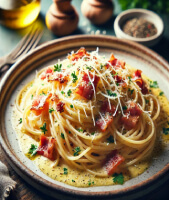
Carbonara is made with hard cheese, eggs, salt, black pepper, and cured ham. Most carbonara dishes use guanciale, a cured pork jowl, for the meat, but outside Italy, some cooks may use pancetta. The original requires guanciale, so if you are preparing carbonara the traditional way, you will have to source some. As for the cheese, most carbonara dishes use pecorino romano, but some variations use parmesan or grana padano.
The sauce, which is arguably the best part of a hearty Carbonara, is made at the very end. It requires mixing the raw eggs into the pasta after it is made, but without curdling the eggs.
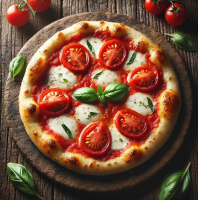
The legend goes that pizza Margherita was made for the visiting Queen Margherita, who commissioned a special Neapolitan pizza in her honour. Pizzaiolo (pizza maker) Raffaele Esposito created the Margherita using ingredients that represented the colours of the Italian flag. The red tomatoes, white mozzarella and green basil, became the unquestioned trademark of the Margherita Pizza.
At a beginner's level, the pizza requires mozzarella and fresh basil in addition to a homemade tomato sauce. But if you want to put in the work, then it is highly worth making the dough from scratch. An even greater boost would be to use a pizza grill, emulating the stone ovens in which Neopolitan Margherita pizzas are prepared.
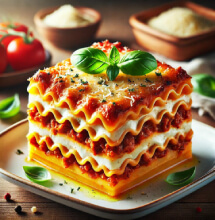
Lasagna is one of the oldest Italian pasta dishes. It hails from ancient Rome, from a dish called lasanum, which featured flat sheets of pasta dough cut into strips. Lasagna is perhaps one of the most versatile and copied dishes all over the world, and there are tons of recipes for this classic food.
The main features of lasagna are the alternating layers of pasta and ragu filling. This is topped by a bechamel sauce, and could have some grated cheese on top of that. One of the most popular variants of the meal is Lasagna alla bolognese, which uses a tomato and ground meat sauce. Another variant, Lasagne di Carnevale in Naples, uses layered sausages and meatballs. Or, Lasagna al Forno, which uses a thicker ragu and the pasta itself is green in colour, owing to spinach and other vegetables getting mixed into the dough.
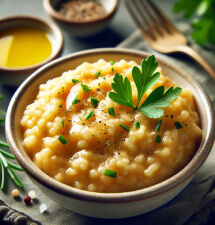
Most commonly found in the North of Italy, risotto combines Italian rice with a creamy broth that can have meat, fish or vegetables. Rice is also grown in Southern Italy but gradually moved up to Northern Italy, such as in the marshes of the Po Valley, where the conditions are perfect for growing Arborio rice. Risotto is made in the three large regions in the North: Lombardy, Piedmont and Veneto. Traditionally, instead of olive oil, butter or fat is used to coat the grains of rice.
Risotto alla Milanese, one of the most well-known risotto dishes, is made from beef stock, lard, and cheese. It is coloured with saffron to create a yellowish hue in the rice grains. Risotto ai Funghi, Risotto ai frutti di mare, and Risotto al Barolo are also popular variants of risotto that are enjoyable to make and eat. There are lots of tips for making a good risotto, but arguably, the most valuable of all is patience. Specifically when you are pouring the stock into the rice mixture. The worst thing you can do is drown the rice in your stock. By adding it slowly and in increments, you will achieve a much creamier and flavoursome meal.

Practically every Italian family has a recipe for Tiramisu, and there are many ways to prepare this beloved Italian dessert. Tiramisu, broken down to tirami su in Italian, literally translates to "cheer me up", an apt name for such a fantabulous sweet dish.
There are lots of different ways to create Tiramisu, and it is quite easy to adapt to different dietary needs. But the original recipe needs cocoa powder, sugar, egg yolks, Mascarpone, ladyfingers, coffee and either Marsala wine, amaretto or a coffee-based liqueur. The ladyfingers, or savoiardi in Italian, are soaked in alcohol, dipped in coffee, and layered. On the top there is a thick creamy layer made through a mixture of the cheese, eggs and sugar, and this is topped with the cocoa powder. But some variants incorporate fruits, alternatives to the ladyfingers such as panettone, or even other liquors such as rum or brandy.
For the true Italian food experience, you should source the original ingredients. In some cases, this is easier said than done, as the local ingredients may not be readily available or seasonal.
If the original recipe calls for DOP ingredients (Protected Designation of Origin or Denominazione d'Origine Protetta), and you cannot source them, don't worry. We will guide you through all the necessities and provide you with worthy substitutes so that you don't miss the mark. But the following ingredients are highly recommended and are a must for cooking Italian food.
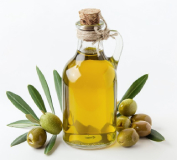
Italy is one of the biggest producers of olive oil, and you can use Extra Virgin Olive Oil in most dishes. It can be used for both cooking and finishing dishes.
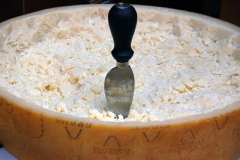
A cured hard cheese, the quality Parmigiano is aged for at least 12 months. Its natural saltiness and delicate flavour can boost any pasta or risotto dish.
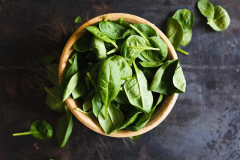
Oregano, basil, rosemary and thyme are staples in Italian dishes, and if you can buy them fresh (or better yet, build yourself a garden), you can take your meals to the next level without much effort required.
In its essence, Italian foods generally don't have many ingredients, but it is vitally important to use fresh ingredients when possible. Sauces, broths, and ragu are better when you aren't in a hurry and can afford to allow them to simmer for long periods.
The key to an authentic bolognese sauce is using fresh ingredients and stewing them for enough time to develop a rich flavour. Besides the tomatoes and soffrito base (celery, onions, and carrots), a little milk and quality red wine can take your bolognese to the next level. Watch this video to get the method and prepare a magnificent bolognese sauce for your next meal.
Copyright © 2025 www.bernardis.co.uk. All Rights Reserved.